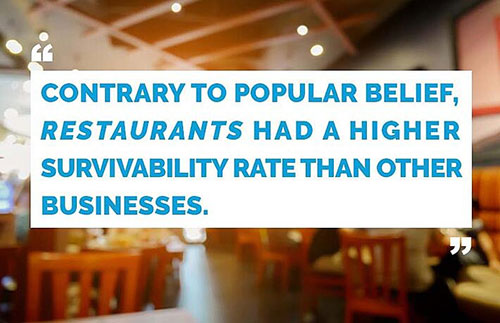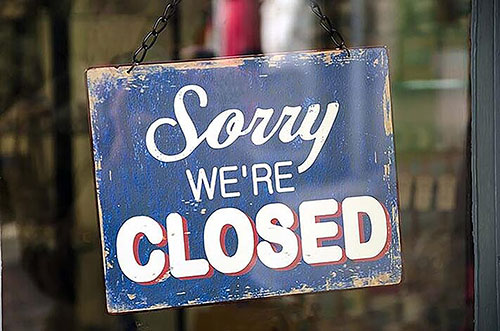In an era when celebrity chefs and globe-trotting gourmands have become mainstream cultural icons, you might think it’s a good time to finally start that restaurant you’ve always dreamed of. On the other hand, you may have heard horror stories about the high failure rates restaurants face and may be hesitant to take a chance on something so risky.
Like most things, the truth is somewhere in the middle. Any new business will face enormous challenges when it starts and many will not survive more than a few years. However, this shouldn’t deter you from pursuing your dream if you are serious about it and are willing to put in the time and effort to make it succeed.
Related: 15 Ideas to Get New Customers in Your Restaurant
The Truth About Restaurant Failure Rates
Many of the statistics on restaurant failure rates are actually based on relatively limited datasets or, even worse, are fabricated. One common statistic often cited originated from an American Express commercial, which claimed that 90% of restaurants fail in the first year. While it does have shock value, there doesn’t appear to be any evidence to support this statistic.
Many articles about restaurants also cite a 2005 study from Ohio State University, which apparently found that 60 percent of restaurants will fail in their first first year. However, this statistic only arises from a misreading of the report. The study found that only 26.16 percent of restaurants will close in their first year, and 60 percent will close by their third. Furthermore, this study focused on restaurants in the Columbus, Ohio area over a three-year period. In addition, restaurants that were sold but which remained open under new management were counted as “failures.”

Related: Top 5 Ways to Increase Restaurant Traffic During the Work Week
A more recent and far-more comprehensive study from 2014 by Tian Luo and Philip B Stark of the University of California, Berkeley, used data from the Bureau of Labor Statistics to examine the lifespans of 81,000 restaurants in the western United States over a 20-year period. They found that contrary to popular belief, full-service restaurants actually had a higher survivability rate than other businesses. Only 17 percent of restaurants failed in their first year, which is on par with that of insurance brokerages and lower than the 19 percent failure rate most other service industries faced.
Reasons Why Restaurants Fail
While the failure rate for restaurants is much lower than commonly believed, failure is still a very real possibility. Some of the common reasons for failure include:
- Ineffective marketing
- Absentee or inexperienced owners
- Poor customer service
- Low quality product
- Bad location
- Inadequate cash flow
- Inept management
- High payroll
- Inconsistent accounting
The Secret Behind Restaurant Success
Marketing is essential to the success of any business, and its importance has only increased with the advent of the Internet. In today’s digital environment, your restaurant’s reputation, or lack thereof, can make or break it. Tempting though it may be, it is not enough to simply focus on the quality of your restaurant’s food or service. If people don’t know about your restaurant, where to find it, and what it has to offer, they’ll become regulars for your competitors.
Marketing Your Restaurant Effectively
Send direct mail: Direct mail remains one of the most effective ways to reach customers. Targeted direct mail can yield even greater results. Studies have shown that direct mail boasts a nearly 4.5 percent open rate, compared to only about a 0.12 percent open rate for e-mails. Each mailer costs only about 40 to 60 cents and could help to snag you a lifelong customer, making it well worth the investment.
Get on social media: Social media provides a free and easy-to-use advertising platform for restaurants. It is a great way to connect with customers, whether it’s by sharing pictures, answering questions or concerns, or advertising special offers. Facebook and Instagram are two of the most popular platforms for interacting with restaurant customers, but Yelp has emerged as the premier site for online restaurant reviews.
Have a soft opening: With a soft opening, you could build up anticipation for your new restaurant in your neighborhood and on social media by offering free food, especially if you manage to attract a few key influencers. You can also work out some of the kinks in operations before your official opening day, allowing you to enjoy a smooth roll-out.
Related: 6 Grand Opening Ideas to Wow Them on the First Night
Starting a restaurant entails a number of risks, but no more than you could expect from any other kind of business. With the right marketing strategy, you can reach customers and avoid the troubles many restaurant owners face during their first year. Start by checking out the awesome restaurant business cards we offer and requesting a FREE sample.


